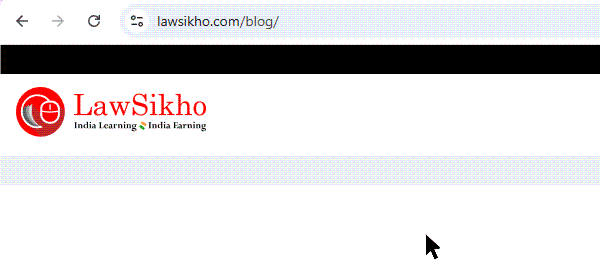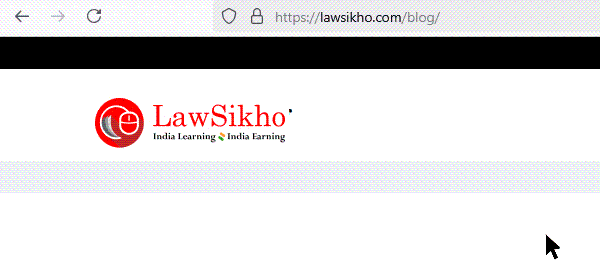This article provides readers with a comprehensive guide to conducting legal due diligence before the conversion of preference shares into equity shares. Building on my previous article about procedural steps, this piece offers practical scenarios, detailed checklists, and expert advice drawn from experience to help you navigate complex conversions under the Companies Act, 2013.
Table of Contents
Introduction
Remember Priya from my previous article “Share Swap 101: How to Flip Preference Shares into Equity“?
She was the new lawyer tasked with converting preference shares into equity shares during her first week at a prestigious law firm.
Just to refresh your memories, in my previous article, I explained the basics of shares and the mechanics of conversion under the Companies Act, 2013.
While, in the present article, I am going to help you create a checklist to help you prepare for the conversion of preference shares into equity shares like a pro.
So let us do that by looking at what is happening on Day 3 of Priya’s assignment.
After reading up and understanding the what and how of converting preference shares into equity, she felt a bit more confident. But just when she was about to draft the board resolution, her senior sent her a message:
“Before you go ahead, make sure you have done the due diligence. We do not want any surprises later.”
Priya froze.
“Wait… what kind of due diligence are we talking about? Isn’t this just a simple conversion?“
That is where most lawyers, especially in the early years, go wrong.
Conversions may look like a straightforward filing process. But if you do not check the legal, financial, and regulatory groundwork beforehand, you risk invalidating the entire process or creating future compliance issues.
This article is your checklist, the kind Priya wishes she had.
If the first part taught you the mechanics of conversion, this second part will teach you how to prepare for it like a pro.
I will break down everything you need to verify, from company documents, shareholder approvals, Rule 9 compliance, and more, before you even begin drafting that first resolution.
So, let us begin.
Why conduct due diligence before conversion?
Before I explain the importance of why due diligence is important, I want you to take a guess.
Not good at guessing? Never mind.
Let me share a real-life example for easier understanding.
It was 2015 when I got my first independent conversion assignment for a Delhi-based company. It was my first independent client, so I was excited and nervous at the same time.
Out of nervousness, I only focused on the mechanics of the process, and I completely overlooked a restrictive covenant in the shareholders’ agreement.
Midway through the conversion, I got a call from my client saying that their largest investor had threatened them with litigation, claiming that the company had violated their anti-dilution rights. FYI, anti-dilution rights are a set of rules that protect investors from having their ownership percentage reduced when new shares are issued.
What should have been a two-week process stretched into three months of negotiations and amendments because I neither conducted a due diligence exercise before starting the conversion, nor did I think of looking at a comprehensive checklist to keep me on track.
That expensive lesson taught me the importance of comprehensive due diligence as the foundation of a successful conversion. Since I made that mistake, I do not want you to repeat similar mistakes, and that is the answer to why you should conduct a due diligence exercise before conversion.
To sum up, have a quick look at the infographic below to understand why due diligence matters:
- Risk identification: Thorough due diligence prevents critical issues like silent Articles of Association, undocumented verbal agreements, insufficient authorised capital, and shareholder rights violations that can derail the conversion process.
- Legal assurance: A comprehensive due diligence checklist helps lawyers stay in compliance with the legal framework of the Companies Act and related rules.
- Cost and time savings: A few days of focused due diligence is significantly less expensive than weeks of remedial work. Due diligence helps prevent funding delays, additional filing fees, stamp duties, emergency amendment costs, and penalties for delayed filings.
Scope of the due diligence exercise
In this part of the article, I am going to walk you through what your due diligence exercise should cover before you even think about converting the preference shares: –
Key areas: What to examine
Due diligence is like a comprehensive health check-up of a company, verifying whether the preference shares are fit for conversion. Thoroughly examine these four critical areas:
- Corporate documents: This includes the Articles of Association, Memorandum, board resolutions, and share subscription agreements.
- Statutory compliance: Verify that the company has complied with all relevant sections of the Companies Act, particularly sections 55, 48, 47, and 42, along with Rule 9 of the Share Capital and Debentures Rules. Are all necessary forms filed with the ROC? Has the company maintained proper registers? One missing MGT-14 from three years ago can derail your timeline today.
- Shareholder rights require careful scrutiny. What rights do the preference shareholders currently enjoy under section 47? Will the conversion affect any existing dividend preferences or liquidation rights? Check if preference shareholders have voting rights as per section 47(2), which may impact section 48 approvals. If you miss answering these questions, then you can expect litigation later on by the shareholders.
- Procedural readiness is about confirming that your client is procedurally ready to execute the conversion. Is their authorised capital sufficient? Did they pass the necessary board resolutions at the time of issuance of preference shares? Are their shareholders ready to give consent under section 48?
Timing: Do not wait until the last minute
Here is a rookie mistake I see fresh graduates make too often: starting due diligence a week before the planned conversion.
Start your due diligence well before any expected conversion trigger dates. If you know a Series A funding round is coming up in three months, begin your due diligence now. If Compulsorily Convertible Preference Shares (CCPS) are set to convert after three years, don’t wait until month 35.
I generally recommend that junior associates start the due diligence process at least 8-12 weeks before the anticipated conversion date. This buffer has saved many of my clients from unnecessary stress and potential non-compliance.
Outcome: Preparing the due diligence checklist
All your work will culminate in a comprehensive due diligence checklist, a practical roadmap that guides the entire conversion process.
Your checklist should identify each potential issue. For each potential issue, include specific remedial actions with clear timelines.
For example, instead of simply marking “AoA needs amendment,” your checklist should specify: “AoA lacks a specific clause permitting conversion of preference shares into equity shares, requiring amendment via special resolution under section 14 of the Companies Act, 2013. Action required within 14 days:
(1) Prepare notice of board meeting and board resolution,
(2) Convene board meeting and pass resolutions
(3) Draft EGM notice with explanatory statement,
(4) Schedule EGM with 21 days’ notice, and
(5) File Form MGT-14 within 30 days of resolution.”
Your checklist should transform problem identification into solution implementation.
Step-by-step timeline of conducting legal due diligence for conversion
Let us assume you are the legal counsel for TechVision Solutions, a Bengaluru-based startup, and Vikram Mehta, the CEO, has approached you to conduct due diligence on converting preference shares to equity shares before their upcoming Series B funding. Here is a methodical approach to the process.
Step 1: Review the Articles of Association (AoA)
First, get a certified copy of TechVision’s AoA. This document holds the key to whether TechVision can proceed smoothly or needs to take additional steps.
Due Diligence points: Review the AoA and look specifically for:
- Any clause that explicitly permits the conversion of preference shares into equity
- Specific procedures outlined for such conversion
- Restrictions or conditions that might apply to conversion
Scenario 1: AoA is Silent on Conversion
If one of the clauses in the AoA reads as “redeemable preference shares” but says nothing about convertibility, then you have a problem.
Advise Vikram that an AoA amendment is necessary before any conversion can take place. This amendment requires compliance with section 14 of the Companies Act, 2013, which governs alterations to the AoA.
Start by preparing for a board meeting where directors can approve recommending this amendment. Draft a clear new clause that specifically addresses the conversion of preference shares. You may use this sample clause:
“The Company shall have the power to convert any preference shares issued by the Company into equity shares, provided that the terms of the issue of such preference shares include such a right of conversion and subject to compliance with the provisions of section 55 and 48 of the Companies Act, 2013, the Companies (Share Capital and Debentures) Rules, 2014, and other applicable provisions of the Companies Act, 2013 and rules made thereunder, as amended from time to time.”
The process to amend AoA would look like this:
- call a board meeting by sending notice of board meeting
- draft a board resolution recommending AoA amendment under section 14
- convene board meeting and pass board resolution for amendment in AoA
- call an EGM with 21 days’ notice (unless shorter notice consent is obtained) as per section 101
- prepare special resolution documents requiring a 75% majority as specified in section 114(2)
- after the special resolution is passed in the EGM by shareholders, ensure Form MGT-14 is filed with the ROC within 30 days as required by section 117(1)
This will take about 6-8 weeks, accounting for 21 days’ EGM notice, ROC processing (1-2 weeks), and potential shareholder coordination delays. Plan for 10 weeks if disputes arise. Keep Vikram updated about this timeline because it will have implications for their Series B funding.
Scenario 2: AoA contains conversion terms
If one of the clauses of the AoA states something like “The preference shares issued by the Company may be converted into equity shares in accordance with the terms of issue and subject to compliance with applicable laws,” you are in luck.
In that case, tell Vikram that “The AoA already permits conversion as required by section 55 of the Companies Act, which saves us significant time. We can move directly to examining the specific terms of the issue without amending the articles.”
Step 2: Examine the terms of issue
Now, gather all the original documents relating to the issue of Compulsorily Convertible Preference Shares (CCPS) to Horizon Ventures by TechVision. You have to check:
- Board resolution approving the CCPS issuance
- Share subscription agreement (SSA)
- Shareholder agreement
- The private placement offer letter and explanatory statement
- Special resolution passed by shareholders, if any
Examine: Once you have all the documents, read Rule 9 of the Companies (Share Capital and Debentures) Rules, 2014, as this will be your guide to examine the documents collected. As per Rule 9, the terms of issue must clearly specify:
- rate of dividend on preference shares
- terms of redemption/conversion
- manner and modes of redemption/conversion
- period of redemption/conversion
Scenario 1: Terms of issue are clear and complete
If the share subscription agreement (SSA) clearly states something like: “Each CCPS shall convert into equity shares at a ratio of 1:1.5 upon the earlier of (i) 36 months from issuance, or (ii) closing of Series B funding of at least $10 million” and these same terms appear in the board resolution and explanatory statement, then it’s good news.
You can advise Vikram that “The conversion terms are clearly defined as required by section 55(2) and Rule 9(2) of the Share Capital and Debentures Rules, which means we can proceed with the conversion based on these pre-determined terms without additional approvals for the terms themselves.“
Scenario 2: Terms are silent or Incomplete
If, however, you discover that while the SSA mentions conversion, the board resolution and explanatory statement only vaguely state something like “The preference shares may be converted into equity shares” with no details on ratio, price, or triggers, then you have got some work to do.
In this case, inform Vikram that there are compliance challenges. The original terms of issue do not adequately specify the conversion details as required by section 55 and Rule 9 of the Share Capital and Debentures Rules. This creates two problems:
- TechVision cannot legally convert preference shares into equity shares based on these vague terms, and
- The original issuance itself might be defective from a compliance perspective.
The company has two possible approaches:
- Engage with Horizon Ventures to formally document the conversion terms now by:
- Calling a board meeting to approve specific terms
- Getting shareholder approval under section 62(1)(c) for what would essentially be treated as a new preferential allotment
- If the CCPS terms allow for redemption under section 55(1), the company can redeem the existing preference shares and issue fresh equity shares to Horizon as an entirely new transaction under section 62(1)(c). Redemption is viable only if permitted by CCPS terms under section 55(1).
These complications highlight why proper documentation is crucial when preference shares are initially issued. Fixing inadequate terms later is much more complicated.
Scenario 3: Conflicting terms
Another situation you might encounter is when the board resolution states a 1:1 conversion ratio, but the SSA specifies 1:1.5.
When you see such conflicting terms, advise Vikram that “We have conflicting conversion ratios in the documents, which creates uncertainty under Rule 9 of the Share Capital and Debentures Rules. Before proceeding, we need to:
- review all agreements to determine which document takes precedence
- obtain written confirmation from Horizon Ventures acknowledging the correct ratio
- have the board pass a fresh resolution clarifying the correct terms under section 179(3)
- document this clarification properly to prevent future disputes.
Step 3: Assess authorised share capital
The next step is to examine TechVision’s Memorandum of Association (MoA) and recent Form SH-7 filings.
Verification points: You need to look for:
- the current authorised share capital breakdown between preference and equity shares
- whether there is sufficient authorised equity capital for the post-conversion shares
- any recent capital alterations
Scenario 1: Sufficient authorised capital
If TechVision’s authorised capital is ₹1 crore divided into 6 lakh equity shares of ₹10 each and 2 lakh preference shares of ₹10 each, and they have 1 lakh CCPS with a 1:1.5 conversion ratio (requiring 1.5 lakh new equity shares), you’re fine.
Tell Vikram that “Your authorised capital is sufficient for the conversion as required by section 64 of the Companies Act. We can proceed without any capital alteration, which simplifies the process considerably.“
Scenario 2: Insufficient authorised capital
If instead the authorised capital is ₹1 crore with only 5 lakh equity shares of ₹10 each, and they need to issue 6 lakh new equity shares of ₹10 each post-conversion, you have a problem.
In this case, advise Vikram that before TechVision proceeds with conversion, you need to increase authorised equity capital. This means that you have to:
- Call a board meeting to recommend increasing the authorised equity shares under section 179
- Obtain shareholder approval through a special resolution under section 61 of the Companies Act
- File Form SH-7 with the ROC within 30 days as required by section 64
- Pay additional registration fees based on the increased capital per the Companies (Registration Offices and Fees) Rules, 2014
- Amend the MoA to reflect the new capital structure as per section 13
Make sure Vikram understands this process will add 6-10 weeks to the timeline, including 21 days’ EGM notice, ROC processing (2-4 weeks), and potential shareholder delays. Budget extra time for ROC queries.
Step 4: Verify shareholder rights and approvals
Now, analyze whether the conversion will affect the rights of preference shareholders under section 48 of the Companies Act.
Verification Points: For this purpose, assess:
- Whether conversion would change any existing rights of shareholders
- If conversion terms were clearly communicated when shares were issued
- Whether you will need 75% written consent or a special resolution of the affected class
- Verify voting rights under section 47, as preference shareholders may lack voting power unless dividends are in arrears, per section 47(2)
Scenario 1: Pre-agreed conversion in original terms
If the CCPS were clearly issued as “compulsorily convertible” with specific triggers that were disclosed at issuance:
You can tell Vikram that “Since conversion was an inherent characteristic of these CCPS from the beginning, and all terms were clearly communicated when issued as required by section 55 and Rule 9, we don’t need separate approval under section 48. The preference shareholders already consented to these terms when they subscribed.”
Scenario 2: Conversion affects existing rights
If the CCPS carried special rights (like a cumulative dividend of 0.001% and a liquidation preference), that would disappear upon conversion.
In that case, converting these CCPS will eliminate Horizon’s preferential rights, which constitute a variation of their class rights under section 48 of the Companies Act.
To handle this situation, you will need either written consent from holders of at least 75% of the CCPS value as stipulated in section 48(1) or a special resolution passed at a separate class meeting of just the CCPS holders.
Since Horizon is the only TechVision CCPS holder, getting its written consent would be the simplest approach. Check their voting rights status under section 47(2) to ensure proper approval.
Step 5: Check statutory compliance history
This is where many junior lawyers cut corners, so you should not overlook TechVision’s compliance history.
To check the statutory compliance history of TechVision, you must review:
- past compliance with preference share issuance requirements under sections 62 and 42
- verify compliance of private placement rules with section 42, including segregated bank accounts and Form PAS-3 filings, to ensure valid issuance
- form PAS-3 filings for prior allotments as required by Rule 12 of the Companies (Prospectus and Allotment of Securities) Rules, 2014
- any pending statutory filings or ROC notices
- whether the register of members and share transfers are up-to-date as per section 88 of the Act
Scenario 1: Clean compliance record
If everything is in order, great!
You can confidently tell Vikram: “Your compliance record is clean as required by various provisions of the Companies Act, which will ensure smooth processing of our conversion filings without regulatory hiccups.”
Scenario 2: Compliance gaps discovered
If you discover that Form MGT-14 for the board resolution authorizing the CCPS issuance was never filed, or the annual return shows discrepancies relating to a number of shareholders, inter alia.
You have to be upfront with Vikram about this. Tell him that there are some compliance gaps that you need to address first:
- file the pending MGT-14 immediately as required by section 117, paying the additional fees for delay under section 403 of the Act
- correct any discrepancies relating to shareholding patterns in your annual returns (Form MGT-7) as required by section 92 of the Act
- update the register of members to accurately reflect current shareholding as per section 88 of the Act
- prepare a condonation letter explaining the reasons for the delay as provided for in section 460 of the Act
If you address these issues beforehand, you’re most likely to prevent the ROC from raising objections during the conversion process, which could otherwise delay Series B funding for TechVision.
Step 6: Inspect shareholder agreements and foreign investment compliance
From experience, you must look beyond the law and examine the contractual obligations that might exist on top of statutory requirements. Ask for previously concluded shareholder agreements from TechVision’s management and look for:
- anti-dilution provisions that might be triggered by conversion
- pre-emptive rights of existing equity shareholders that might align with section 62(1)(a)
- investor consent requirements for capital structure changes
- tag-along or drag-along rights that might complicate things
Additional verification for foreign investors: If Horizon Ventures is a foreign investor, verify FEMA compliance, including pricing per RBI guidelines and filing Form FC-GPR within 30 days of allotment, per Schedule I of FEMA Non-Debt Instruments Rules, 2019.
Scenario 1: SHA supports conversion
If the SHA clearly contemplates conversion without imposing extra requirements, then you’re all good to go. This means that the SHA already addresses conversion and does not impose any additional requirements beyond the statutory process under the Companies Act. So, you can tell Vikram that the conversion process can proceed without any requirement of seeking additional approvals from the investors.
Scenario 2: SHA contains restrictive provisions
If the SHA has:
- Anti-dilution clauses,
- Requirements for Horizon’s written consent for capital structure changes, or
- Pre-emptive rights for existing shareholders.
Then you have to inform Vikram that the SHA creates several additional contractual requirements that need to be addressed, such as:
- TechVision may need Horizon’s explicit written consent due to the capital structure change provision
- We should prepare an anti-dilution waiver for Horizon to sign
- We may need to offer existing equity shareholders the opportunity to maintain their percentage ownership as per the SHA (in addition to statutory requirements under section 62) or get them to waive their pre-emptive rights
These contractual obligations exist on top of the statutory requirements, and ignoring them could result in breach of contract claims against TechVision even if TechVision complies with the Companies Act.
For listed companies, verify compliance with SEBI (LODR) Regulations, 2015, as amended in 2023. Conversions triggering capital structure changes require disclosure under Regulation 30 within 24 hours, including details of conversion terms and impact.
Step 7: Evaluate valuation and tax implications
Valuation considerations can be tricky, but are critically important.
Valuation Requirements: Assess:
- Whether the conversion ratio/price needs fresh valuation support
- If the original valuation for CCPS issuance is still valid
- Requirements under section 247 for registered valuer reports
Tax Implications: Assess tax implications under Section 56(2)(x) for shareholders receiving equity at a premium. Consult a tax advisor to confirm capital gains tax or TDS requirements under Section 194R.
Scenario 1: Pre-determined fixed conversion ratio
If the CCPS conversion ratio was clearly fixed at issuance (such as 1:1.5):
You can tell Vikram: “For pre-fixed ratios, valuation may not be needed under section 247 unless FEMA pricing guidelines or Section 56(2)(x) tax rules apply, particularly for foreign investors. Obtain a valuer’s report if in doubt.”
Scenario 2: Conversion based on formula or current valuation
If the conversion terms state that shares will convert “at fair market value” or based on a formula. Then, you need:
- A registered valuer’s report under section 247 of the Companies Act
- Board approval of the valuation for conversion purposes under section 179
- Documentation of the valuation methodology in our filings
Step 8: Confirm stamp duty compliance
This small detail is often overlooked but can cause big problems.
Verification points: Research:
- Verify stamp duty under the Indian Stamp Act, 1899, or state laws
- Confirm exemptions for conversions under state schedules
- Document payment via e-SBTR (electronic Secured Bank and Treasury Receipt)
- Payment procedures and documentation requirements
With these 8 steps, you can be sure that the conversion process will get approved without any hassles or difficulty. For your reference, here’s a summary table of the due diligence process:
| Step | Focus area | Key sections/Forms | Timeline | Common issues |
| 1 | Review AoA | Section 14, MGT-14 | 6-8 weeks | Silent AoA, amendment needed |
| 2 | Terms of Issue | Section 55, Rule 9 | 2-4 weeks | Vague/conflicting terms |
| 3 | Authorized Capital | Section 61/64, SH-7 | 6-10 weeks | Insufficient capital |
| 4 | Shareholder Rights | Section 47/48 | 1-3 weeks | Rights variation |
| 5 | Compliance History | Section 42, PAS-3 | 2-4 weeks | Missing filings |
| 6 | Agreements & FEMA | SHA, FC-GPR | 1-2 weeks | Restrictive provisions |
| 7 | Valuation & Tax | Section 247, 56(2)(x) | 1-3 weeks | Valuation gaps |
| 8 | Stamp Duty | State Acts | 1 week | Rate variations |
You can access a more detailed downloadable checklist here.
Practical tips for a smooth exercise
I would like to share some practical tips to help you avoid problems I encountered in my initial days as a corporate lawyer.
| Tip | Description |
| Start Early | Begin due diligence at least 8-12 weeks before expected conversion trigger dates. |
| Collaborate with Key Stakeholders | Work closely with the company secretary, management, and finance teams to ensure all required documents are accessible. |
| Cross-Verify Findings | Don’t rely on a single source; check information against multiple references, including the Companies Act, Rules, and company records. |
| Document Everything | Maintain detailed records of your due diligence process, including all documents reviewed, findings, and recommended actions. |
| Prepare a Comprehensive Timeline | Create a detailed conversion timeline, including all necessary actions, responsible parties, and deadlines. |
| Address Issues Sequentially | Tackle foundational issues first (like AoA amendments or authorized capital increases) before moving to procedural matters. |
| Engage Specialists When Needed | Don’t hesitate to bring in valuation experts, tax consultants, or specialized legal counsel for complex issues. |
| Anticipate ROC Queries | Prepare answers to likely ROC queries in advance to avoid conversion delays. |
| Use Digital Tools | Utilize MCA’s V3 portal for form filings and tools like Zoho Books for tracking compliance deadlines. |
Conclusion
Alright guys, before closing this article, here is what I really want to share with you.
This eight-step method I showed you comes from helping companies with all kinds of conversions, i.e., easy ones and really tricky ones.
You can use the checklist in any kind of preference to equity share conversion. But, you need to learn to identify big problems that require urgent fixing versus small issues that you can fix later. This will come naturally to you with time provided you put in your sincere efforts.
Between this article and my last one about procedures, you now have everything you need to handle any preference share conversion with confidence.
Lastly, don’t just be the lawyer who points out problems. Rather, be the lawyer who says, “Here is the problem AND here is how we can fix it.”
The best corporate lawyers do not just know the law – they help businesses find practical solutions that work in the real world.






 Allow notifications
Allow notifications
